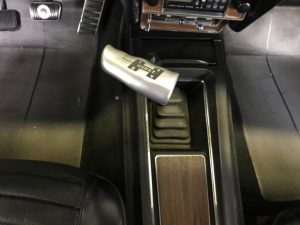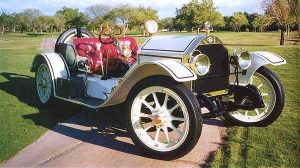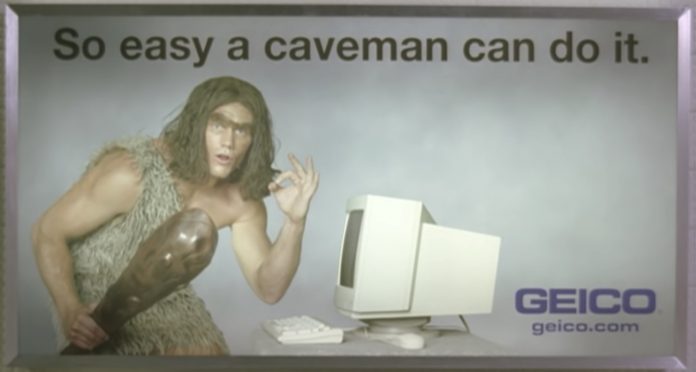The Titanic could have used more lifeboats.
A current cruise liner, laser welded and multiply redundant, could probably do without any – because sinking is improbable and help isn’t hours away in the era of GPS and real-time/right-now continuous communication. Yet it has more lifeboats than it needs. Including some that are more like mini ships themselves, with all the things you’d need to spend days on the open ocean. They probably have microwaves and mini-bars, even.
Certainly WiFi.
New cars are like this, too.
They’ve never been easier to drive; almost no skill is necessary.
Every new car has power steering; almost all new cars come standard with an automatic transmission. The brakes can’t lock up. To stop quickly, all the driver has to do is push down hard – something an orangutang could probably be trained to do.
“Driving” has been egalitarianized. Anyone not actually a quadruple amputee or blind can do it – and even they could probably pull it off.
If you can get the door open and push a button – off you go. In most new cars it isn’t even necessary to be physically capable of turning a key in an ignition switch. The gear selector is also electronic; in many new cars, you also just push a button to engage Drive.
Even a caveman could do it – as the commercial explained.
A caveman didn’t used to be able to do it – and this may not have been a bad thing.
Power steering and brakes were luxury features as recently as the ‘70s, which in the scheme of things isn’t that long ago. (The ‘70s were the seventh decade of the Car Age. The age we live in now is a small slice of the time cars have been around.)
Many cars came with manual transmissions – especially the lower-cost models, which were usually the type that most people learned to drive in. They therefore learned to handle a clutch and shift gears – eventually, smoothly – which required the cultivation of higher-order skills than pressing a button to “make it go” – Pakled style.
They also learned to brake – as distinct from applying the brakes. Braking took skill, including prior to braking – when it was necessary to continuously evaluate one’s speed in relation to objects in the vicinity – such as the car up ahead – and adjust speed and following distance accordingly. Because if you needed to brake suddenly, there was no ABS to prevent you from skidding right into whatever was in your path.
This caused most drivers to pay attention to time/distance relationships; the self-preservation instinct being reasonably strong in most people.
Good drivers developed a high-order skill – it was called threshold braking – which was the application of just enough braking pressure to approach wheel lock, then release just enough enough pressure to avoid it – in order to achieve the shortest possible stop with the vehicle under control and not skidding. This was a kind of human ABS, which required both human skill and human intelligence – both having been superseded in our time by computer skill and intelligence (ABS) with a corollary diminution of the human variety of both.
The irony is that today’s caveman-can-drive-them cars are treated as if they were as fearsome and dangerous to handle as a 1914 Stutz Bearcat.
They have so many “assists” that it’s an open question as to who the driver really is. Many new cars require almost nothing from the “driver” at all for things like parking, because they do it themselves. Push a button, the car does the rest. In some new cars it isn’t even necessary for the “driver” to be in the seat (e.g., the keyfob-activated automated self-parking feature Mercedes and BMW offer in their new cars).
A majority of new cars can stop – and steer – themselves without the “driver” so much as pushing a button.
Not surprisingly, the typical “driver” who learned to “drive” under the present regime is skilled to the extent he is able to push buttons. Ironically, he needs the “assists,” because all of this assistance has rendered him incompetent.
People used to be better drivers because they had no alternative. Many were competent.
If you can operate a car with a manual transmission, for instance, you stand in the position of Homo Neanderthalensis in relation to Homo Erectus, in terms of what you are capable of.
But what appears to be the desired outcome is H. Erectus reborn. Evolutionary recession. A step backward.
Keep him saaaaaaaaaaaaaaaaafe – by making him stupid.
In order to keep him from thinking. Which might lead to him acting in ways not wanted.
. . .
Got a question about cars – or anything else? Click on the “ask Eric” link and send ’em in!
If you like what you’ve found here please consider supporting EPautos.
We depend on you to keep the wheels turning!
Our donate button is here.
If you prefer not to use PayPal, our mailing address is:
EPautos
721 Hummingbird Lane SE
Copper Hill, VA 24079
PS: Get an EPautos magnet (pictured below) in return for a $20 or more one-time donation or a $10 or more monthly recurring donation. (Please be sure to tell us you want a sticker – and also, provide an address, so we know where to mail the thing!)
My latest eBook is also available for your favorite price – free! Click here. 












Eric, my sister has a Hyundai Santa Fe and I noticed the back side windows are small and really don’t allow for usage when one is backing up. I recently rented an impala and the same thing. Is this a not so subtle way to force drivers to use the rear camera assist? I cannot think of any reason a car maker would design a car to impede the use of our natural senses for any other reason. Keep up the good work. I love it.
The small windows are a way to meet the ever more demanding crash safety standards and roll over standards. Also styling. Small windows come and go with regards to the style of cars.
Homo Erectus( wise man say “very scary”) anyhow I wish you could opt for a delete car (signed risk) where you could do away with face bombs, traction control and ABS, you have to have AWD now to get anywhere in the snow if you can’t turn VSA off in a 2 wd car, I grew up driving one wheel drive Ford pickups and after awhile you learn how to drive when it is slick( a 4 wd in icy conditions can be very dangerous, something to do with over confidence )
Eric,
Gird your Teeth on this one…
https://abc13.com/booster-seats-until-middle-school-wa-begins-new-regulations/5264222/
Obviously the agenda is not safety but something else…
Of course. This is how politicians “create new jobs and revenue”, at gunpoint, as usual. They will get either “obedience” or “revenue”; they don’t give a damn about anything else. The incredible part is that no one stops to say, “Wow, how did the global population ever break 7 billion without this bullshit?”
Anyone have any experiences with AW11/SW20 MR2’s?
Curious about the snap oversteer, some exaggerate how prone it is, while I’ve recently read you really gotta be pushing it to make it snap
Hi Zane,
I’ve driven several MR2; these are great cars – especially because they’re underpowered. You have to really be trying to unsettle one.
Why did Toyota stop building them? They were GREAT little cars! I always wanted one…
I think that snap steering is more of an issue in Porches. One, they have a rear vs. mid engine layout. Two, they have a lot more power. So, between having more power (break the rear tires loose) and having a heavy mass toward the rear, a Porsche would be nasty if it breaks loose…
Hey Eric,
Off topic, but take a look at this…
Electric vehicles emit more CO2 than diesel ones, German study shows
Wednesday, 17 April 2019 19:29
http://brusselstimes.com/business/technology/15050/electric-vehicles-emit-more-co2-than-diesel-ones,-german-study-shows
Electric vehicles in Germany account for more CO2 emissions than diesel ones, according to a study by German scientists.
When CO2 emissions linked to the production of batteries and the German energy mix – in which coal still plays an important role – are taken into consideration, electric vehicles emit 11% to 28% more than their diesel counterparts, according to the study, presented on Wednesday at the Ifo Institute in Munich.
Mining and processing the lithium, cobalt and manganese used for batteries consume a great deal of energy. A Tesla Model 3 battery, for example, represents between 11 and 15 tonnes of CO2. Given a lifetime of 10 years and an annual travel distance of 15,000 kilometres, this translates into 73 to 98 grams of CO2 per kilometre, scientists Christoph Buchal, Hans-Dieter Karl and Hans-Werner Sinn noted in their study.
The CO2 given off to produce the electricity that powers such vehicles also needs to be factored in, they say.
When all these factors are considered, each Tesla emits 156 to 180 grams of CO2 per kilometre, which is more than a comparable diesel vehicle produced by the German company Mercedes, for example.
The German researchers therefore take issue with the fact that European officials view electric vehicles as zero-emission ones. They note further that the EU target of 59 grams of CO2 per km by 2030 corresponds to a “technically unrealistic” consumption of 2.2 litres of diesel or 2.6 litres of gas per 100 kms.
These new limits pressure German and other European car manufacturers into switching massively to electric vehicles whereas, the researchers feel, it would have been preferable to opt for methane engines, “whose emissions are one-third less than those of diesel motors.”
Oscar Schneider
The Brussels Times
Bah, forgot my handle…
I have always marveled at how advertising literally insults the crap out of the consumers, and they respond by instantly jumping on the bandwagon! Apparently all people need is just a little nudge, and they will participate in the most idiotic crap imaginable….who would figure?
I very much miss the manual steering in my 1970 Nova. Wind it up tight in a turn and let go as I come out! The large, slick wheel gave me the leverage and control I loved! A Ford of the same vintage was another story, and a frightful one at that! Now, the front drum brakes were another matter entirely, and those I definitely do NOT miss. I would love to have that rugged cast-iron 3-speed Saginaw back though. I kinda miss the floor dimmer, although, you sometimes wished you had 4 feet, lol! back min the 70’s I knew a lot of girls who couldn’t drive a stick, still, those that did, could DRIVE! (my mom included)
Good stuff Eric and OppositeLock. I always thought that as cars got easier to drive we would end up with poor and unsafe drivers.
I have taught my kids and a lot of their friends basic and in some cases advanced vehicle handling. Most of it was on a small oval dirt track I built. Braking, front, rear, both, turn, sliding, etc….. Amazing what you can do with a little 100cc trailbike. I hope these lessons will save them someday.
Thanks, Chris!
Challenges, the acquiring of skills – these are what develop the human being. Franklin’s quip about esteeming too little that which we acquire too cheaply comes to mind. Walking takes some effort, too. Imagine what it’d be like if there were moving sidewalks everywhere. Today’s obese would seem fit and trim in comparison!
Power steering and power brakes have made cars better. Those technologies have no down side in my book from a driving perspective, just from a cost and complexity perspective.
Good hydraulic power steering reduces steering effort, particularly at low speed, with only slight loss in feedback. It makes it a lot easier to park the car, particularly with less upper body strength. Those pre-power steering cars have large steering wheels for more leverage, which have their own issues.
I frequently instruct people how to drive fast around a race track. I teach threshold braking, since some these cars don’t have ABS. It’s not difficult to learn, but you have to be really in touch with a car’s feedback to notice you’re locking one wheel. This feeling will change based on which wheel it is, and also on surface conditions and weather. Frankly, that’s quite a lot to keep in mind, and also train, for driving sedately on the street. Screw up, even once, and you flat spot a tire, costing you a new one. On the track, you don’t need ABS, but for the street, it makes driving more civilized and safe. Few people know about the traction circle (and they should!, that’s your whole point), and I don’t want them endangering me, because they don’t know that they can’t steer and brake at the same time.
The rest of it, 100% agree, all the other aids turn drivers into oblivious morons. Also, what the hell is it recently with braking at maybe 10% braking force half a mile from a light, then stopping three car lengths in front of the line?! You’re not triggering the light sensor, fool, so we’re all stuck until you inch up like a snail.
Hi Opposite,
I like power steering and brakes, too! My intent – as you know – was to point out the irony of cars never being easier to drive yet presumed in need of more and more saaaaaaaaaaaaaaaaaaaaaaaaaaaaaaaaaaaaaaaaafety folderol,which the old cars lacked almost completely.
I can’t believe how many ppl believe ABS works. I’d like to see tests that prove it works. I don’t think there are any or ever will be.
You are correct there. The auto parts industry has known this for at least 15 years, but since it would impact parts sales you are not supposed to talk about it.
There are tests which show ABS from some manufacturers are effectively useless, and many only work when the car is going straight and below 50.
My 2004 and my current 2016 both had 4-wheel ABS.
If you were going 50 and slam on the brakes you will go a lot longer than if you did that without ABS. Without ABS you have to know how to control the car, but it does not correlate to shorter stopping distances.
Both cars had ways to turn off the ABS, and with ABS off I could ALWAYS stop the car faster that with ABS on.
The early ABS systems were touted as the reason the rear brakes wouldn’t function on many F-150s.